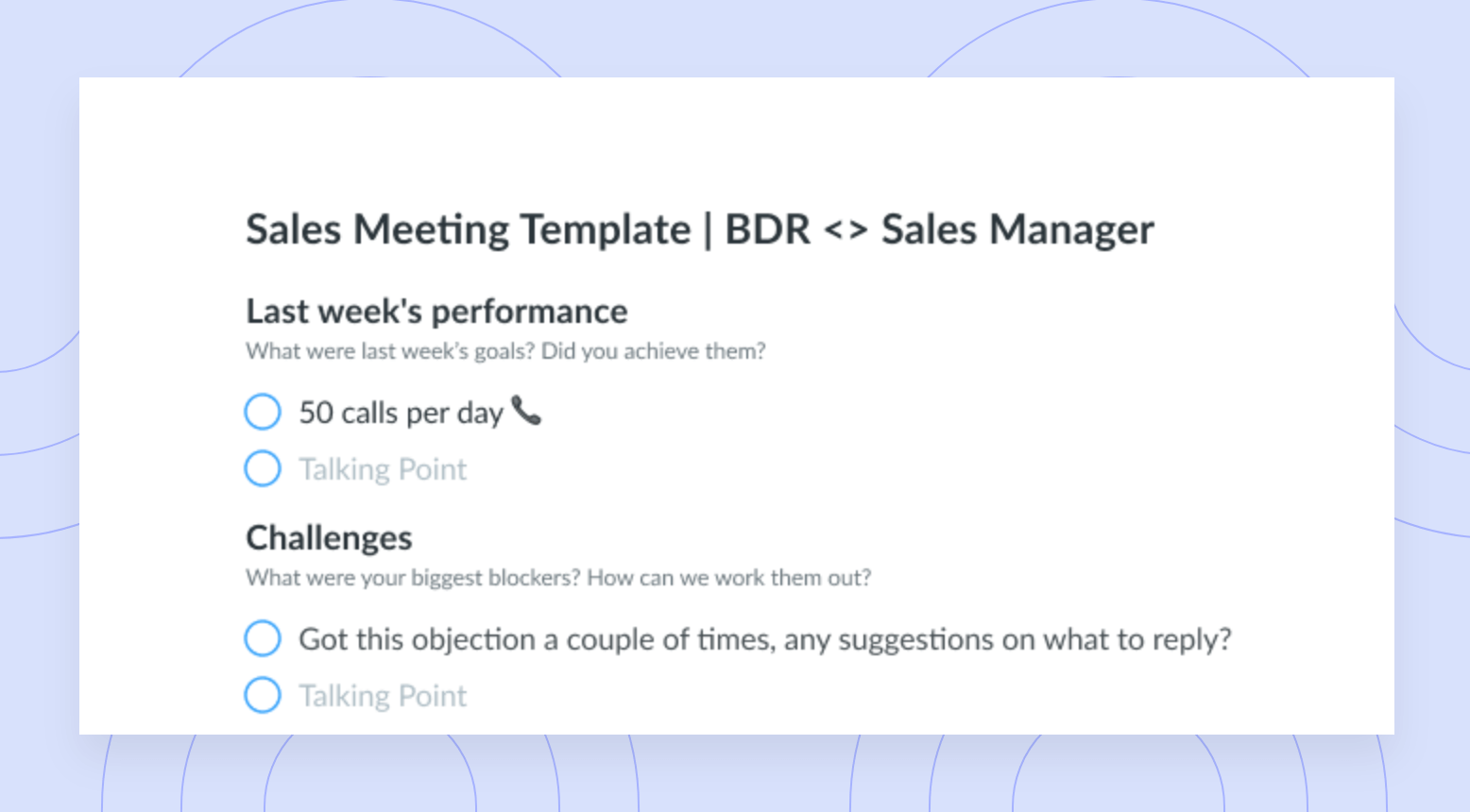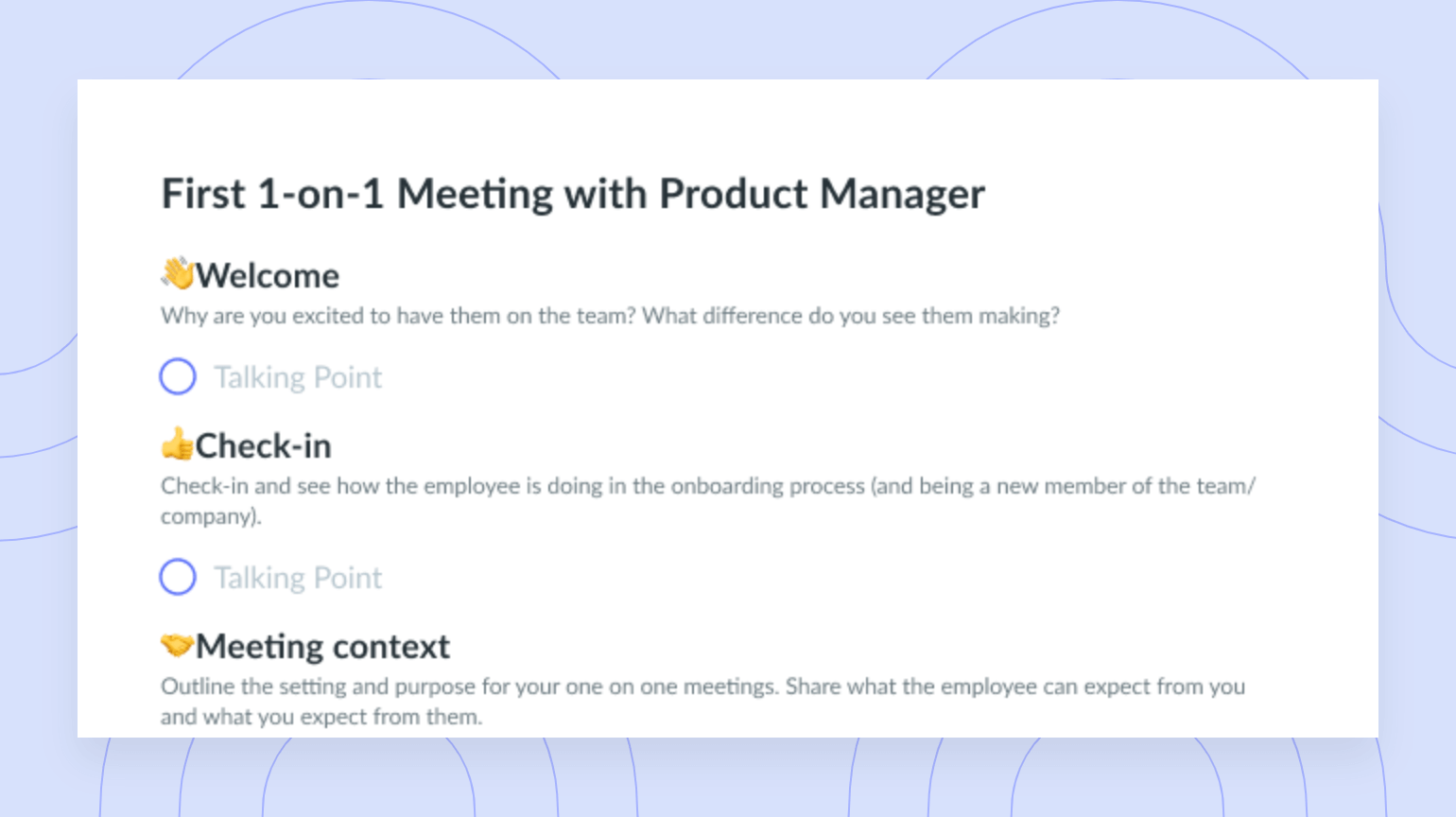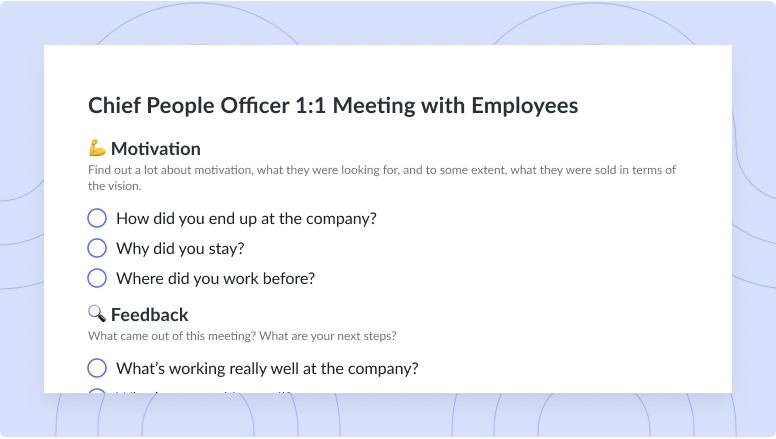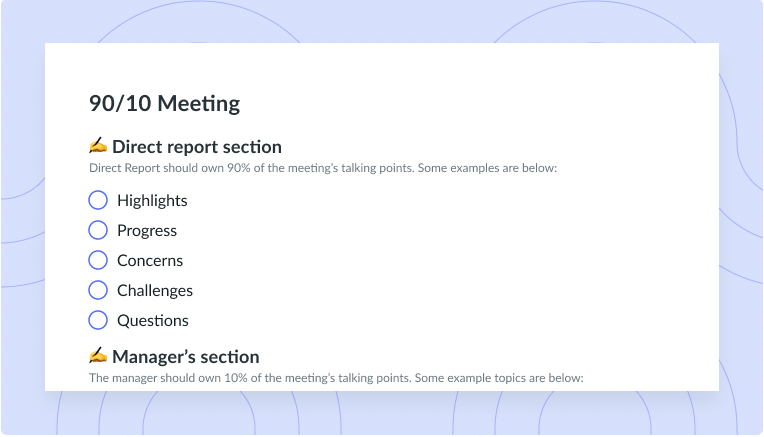Learning to Lead: What’s Involved in Being a Manager
Managers exist at all levels of an organization. What is involved in being a manager, and how do they contribute to the workplace?
It takes two things to run an organization: strategy and tactics.
Strategy directs where you go and why, and tactics decide how you’re going to get there and when.
People in an organization are divided in quite a similar way. First, there are those who focus on strategy and make decisions on what needs to be done. And then there are those who actually do what needs to be done. A manager is (typically) one of the former.
We’re going to break down what it means to be a manager and how a manager’s role impacts the roles of many others in the organization.
What is a manager’s role?
Managers exist at all levels of an organization, so the actual roles and responsibilities associated with being a manager may vary slightly depending on function and seniority.
Generally, a manager is responsible for developing processes and plans within the company. They’re the goal-setters and strategizers of the team who decide what’s worth pursuing and when it’s time to change direction or give up on a project.
To help ensure projects are completed and aligned with the strategy, someone in a managerial role also delegates activities to other team members. A manager should be there to inform and support the team as they work through projects, and be the main point of contact if something goes awry.

Level up your management skills
Foster a productive workplace by giving and receiving feedback. Try a tool like Fellow today to start levelling up your management skills!

Essential skills for managers
Managers are generalists rather than specialists. They have a broad set of skills that help them connect with people and formulate plans. Some essential skills of a manager include:
- Ability to delegate tasks
- Effective communication and leadership skills
- Proactive approach to planning and goal setting
- Ability to motivate and train employees
- Ability to provide constructive feedback
- Ability to manage budgets, payrolls, and expenses
- Detailed approach to tracking and reporting
- Reliability and timeliness to keep projects on track
- Expertise and decisiveness to make informed decisions
Responsibilities of a manager
- Set goals
- Coach and train employees
- Make decisions that benefit the company
- Set and follow a budget
- Lead by example
- Do administrative work
- Delegate work to employees
- Foster a psychologically safe environment
- Refine processes
- Provide and request feedback
1 Set goals
One of the most important responsibilities of a manager is setting goals that are feasible for the team to complete, will yield positive results, and are aligned to the company’s organizational key results (OKRs). OKRs are goals set at both the organizational and team level, so managers may be involved with developing either or both types of OKRs.
To be attainable, all goals and OKRs should follow the SMART framework and be:
- S – Specific to one activity or key result.
- M – Measurable so it’s possible to identify success or failure.
- A – Achievable, or realistic based on the resources available.
- R – Relevant to the strategies in place or the project at hand.
- T – Time-based so it’s possible to measure the success and completion of the project.

2 Coach and train employees
Managers are the top level of support for their team. They should be present to onboard, train, and coach employees through their professional career development. This responsibility also includes leveraging one-on-one meetings to conduct employee reviews and provide constructive feedback to team members on a consistent basis.
It’s also important to note that managers may not always hold the same skills as their employees, particularly when it comes to technical skills. As such, it’s very important that managers are able to redirect employees to the correct resources or training materials to ensure they get the appropriate skills training.
3 Make decisions that benefit the company
Managers are assigned a functional area that they’re responsible for making successful. Within that functional area (whether it be a department, team, or project), managers create strategies and OKRs that will drive new benefits to the organization. Beyond revenue generation, managers may strategize to seek benefits like increased employee or customer retention rates, decreased unnecessary spending, increased sales conversion rates, or decreased time-to-manufacture, for example. A manager’s decisions will always be specific to the functional area that they represent.
4 Set and follow a budget
To implement tactics that help achieve the OKRs they’ve set, managers are also responsible for establishing and maintaining a budget. In larger organizations, a manager will likely receive their budget from a higher level manager or from the C-suite. This approach is called the ‘top down’ budget allocation approach. A manager can then decide feasible OKRs based on the allocated budget available.
In small organizations and startups, however, it’s more common for managers to use the ‘bottom up’ method of calculating the OKRs first,then calculating the costs to achieve the goals. The reason for this approach is that smaller and newer companies have less knowledge of what it may cost to achieve their goals. Practicing the bottom up approach helps them identify a feasible plan and budget.
5 Lead by example
This Harvard Business Review study looks at the power of transference, which causes people to want to follow in their leader’s footsteps. In fact, this transference is so powerful that having good leaders for employees to follow can be an organizational competitive advantage in itself.
Managers are leaders of their team. As such, their work ethic, motivation to learn, approach to managing conflict, and communication styles will all impact how their team performs and interacts. Practicing positive behaviors in the workforce is an effective way to show lower level employees how to approach other colleagues, partners, vendors, and clients. Over time, as more employees continue to adopt positive behaviors, a productive, engaging workforce culture will become established.
6 Do administrative work
The paperwork element of management has traditionally been the bane of most managers’ existence. From filling out legal forms to processing payroll expenses and updating the budget, a lot of a manager’s day can be spent handling administrative tasks.
Using digital tools can help managers fast-forward or automate a lot of this work. For example, most major customer relationship management (CRM) systems have budget tracking and scheduling features. As well, managers can leverage digital e-signature tools, virtual training platforms, and automated meeting integrations to speed up longer tasks.
7 Delegate work to employees
A giveaway sign of a good manager is being able to effectively delegate to employees. Allocating the right work to the right employees is proof that the manager knows the skills and capabilities of their team.
Not providing sufficient opportunities for employees to grow is one of the top reasons so many people have left companies during the Great Resignation. A manager who continually challenges employees with new and interesting work keeps the employees engaged and willing to work for the company’s purpose. Delegating is also a sign that the manager trusts in the team to complete activities well while also learning and improving within their roles.
8 Foster a psychologically safe environment
Having a psychologically safe environment for your team means building a culture where your team is comfortable to admit mistakes, share challenges, and present ideas for new opportunities. In other words, it’s a safe space for employees to be vulnerable about potential weaknesses or failures without risk of negative consequences.
As leaders, managers should use this important strategy to create empowered teams who are able to think critically, experiment, and leverage learnings for future growth.
9 Refine processes
When a team works on multiple projects, often across multiple departments or with various external partners, it can quickly become challenging to maintain efficient processes. A manager has a high-level view of the team’s activities and performance, so they should be able to identify where more resources are needed to drain bottlenecks or to leverage possible new opportunities.
10 Provide and request feedback
Being able to provide clear, constructive feedback is essential to the role of a manager. Doing so enables team members to grow both personally and professionally.
A good manager is also able to receive constructive feedback well. 360 reviews are one assessment approach that ensure both managers and employees are continually improving.
For busy managers, integrating a feedback feature into your meeting management tool is an efficient way to help your team members grow without requiring additional admin time.

Parting advice
As a manager, you’re responsible for the success and growth of your team. Fostering a psychologically safe environment, conducting feedback reviews, coaching employees and leading by example are several ways managers can make a positive impact. Far beyond revenue considerations, a manager’s decisions and support can also go a long way in improving the success of the company and those who work within it.





![7 Meetings Every CEO Should Lead [+ Free Templates]](https://fellow.app/wp-content/uploads/2022/08/Meetings-Every-CEO-Should-Lead-2.jpg)











![Weekly Project Check-In Meeting [Engineer Manager] Template](https://fellow.app/wp-content/uploads/2021/10/1-on-1-Accomplishments-Meeting-preview.png)










